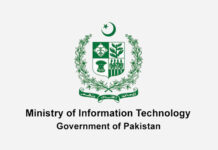In Pakistan, the wealthiest 10 percent hold 42 percent of the national income — a figure that lies below the Asian average, yet large enough to shape the contours of daily life. It determines everything from who gets to study abroad, to who breathes clean air, and who rebuilds after floods. It dictates the future as surely as it defines the present.
This concentration of wealth, measured in an Oxfam International study titled An Unequal Future: Asia’s Struggle for Justice in a Warming, Wired World, exposes the architecture of inequality built into Pakistan’s economy. Across the continent, the richest 10% capture 60 to 77 percent of national income, while the poorest half of society receives only 12 to 15 percent In countries like India and China, the top 1 percent alone hold nearly half of all wealth.
The study, released in October 2025, traces the widening gulf between Asia’s rich and poor. It is a divide sharpened not only by fiscal systems and elite capture but also by climate shocks and the digital economy’s uneven spread. Within its 50 pages lies a pattern familiar to many Pakistanis: a small elite shielded from crisis, and a majority struggling with rising prices, weak public services, and limited access to technology. The content in this publication is expensive to produce. But unlike other journalistic outfits, business publications have to cover the very organizations that directly give them advertisements. Hence, this large source of revenue, which is the lifeblood of other media houses, is severely compromised on account of Profit’s no-compromise policy when it comes to our reporting. No wonder, Profit has lost multiple ad deals, worth tens of millions of rupees, due to stories that held big businesses to account. Hence, for our work to continue unfettered, it must be supported by discerning readers who know the value of quality business journalism, not just for the economy but for the society as a whole.To read the full article, subscribe and support independent business journalism in Pakistan


























😄😄 They want some consulting work